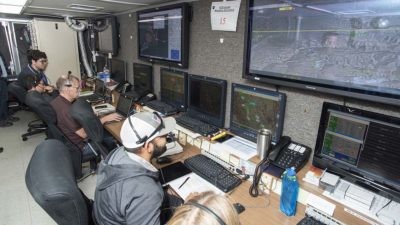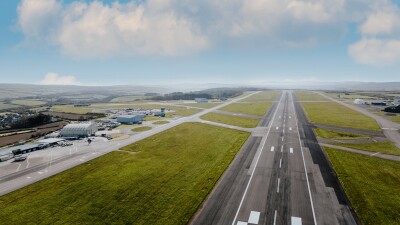For the first 30 years of aviation, all pilots worldwide flew visually (Visual Flying Rules or VFR) using two well-known techniques known as Pilotage and Dead Reckoning.
These techniques consisted basically of having a flight plan with specific milestones to be reached at exact points in the route. By looking at a flight plan and comparing the ground features to the aeronautical chart on board, pilots were able to know with certainty if they were following the planned course and if they were reaching their milestones in good time to make sure they had enough fuel to reach their destination.
These techniques are still being taught today to all pilots in their first few lessons of flying school, and thousands of private pilots use them daily to fly around in visual meteorological conditions in mostly non-scheduled flights around the world.
In 1929, famous aviator Jimmy Doolittle was the first pilot to take off and land using only instruments and without looking outside his cockpit. Next year, in 1930, William C. Ocker, working with brand new equipment by the Sperry Company, developed the necessary protocols that eventually would evolve into the second way of flying: IFR or “instrument flying rules.”
IFR is used in every commercial flight to guarantee aircraft separation and to allow most flights to take off and land in almost any weather, with extraordinary exceptions and is heavily dependent on voice communications and the strict vigilance and guidance of air traffic controllers (ATC). Pilots flying in IFR conditions are not in charge of navigation; ATC is, and instructions are given to pilots using radio communications that the pilots need to acknowledge and strictly follow, except in cases of an emergency.
So, in this new world of unmanned flying does it makes sense that we use two systems that rely on visual acuity and voice commends? Absolutely not. But what’s the answer?
Perhaps a third way, more adapted to the realities of flying by machines that do not need to see the ground or communicate to an air traffic controller.
In a recent conversation with Jon Damush, CEO of Iris Automation, he suggested a new term, Unmanned Flying Rules (UFR), and we discussed the merits at length. But the discussion was an informal exchange of views of two active pilots of crewed aviation who also share a passion for uncrewed aircraft, not a concrete position in terms of implementing a third way.
Now, however, the National Aeronautics and Space Administration (NASA) is suggesting its own version by publishing a white paper titled Applicability of Digital Flight to the Operations of Self-Piloted Unmanned Aircraft Systems in the National Airspace System in which the federal agency argues that unmanned aviation requires a third way. This white paper was written by two Langley Research Center scientists, David J. Wing and Andrew Lacher, in collaboration with William Cotton of Cotton Aviation Enterprises and John Maris, PhD and Paul Vajda of Advanced Aerospace Solutions LLC.
The writers envision a future in which a human pilot/supervisor will oversee multiple flights simultaneously, focusing on multi-vehicle mission management and delegating to autonomous systems on-board the UAV, the active role in controlling the aircrafts’ flight paths.
For Digital Flight (DF) to work, unmanned aircraft will have to comply with existing airspace structures and operations including Visual Flight Rules (VFR) and Instrument Flight Rules (IFR), neither of which were developed to accommodate the unique capabilities and requirements of UAVs.
We agree with NASA that a third way is necessary if we are to reach the immense potential of non-traditional aviation and at the same time maintain the incredible safety record of commercial aviation in the USA. The above-mentioned white paper describing Digital Flight is a credible first step and should be read by anyone wishing and hoping that the beyond visual line of sight (BVLOS) ruling from the Federal Aviation Administration (FAA) comes sooner rather than later.















Comments